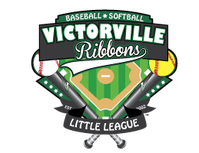LITTLE LEAGUE INTERMEDIATE (50/70) BASEBALL DIVISION Q&A |
|
The following is a list of questions a typical league might ask while preparing to implement the Little League Intermediate (50/70) Baseball Division. If you have any other questions, please contact your District Administrator.
|
|
Q-1: What league ages are eligible to participate in the Intermediate (50/70) Baseball Division?
A: The age spectrum for the Intermediate (50-70) Baseball Division is league age 11 through 13. However, a Local league may establish the age structure for the Intermediate (50/70) Baseball Division. (For example; 11/12, 12/13 or 12yr olds)
|
|
Q-2: Will players be permitted to play in the Little League Major Division and the Intermediate (50/70) Baseball Division at the same time during the Regular Season?
A: The players will be permitted to play in both divisions at the same time during the Regular Season.
|
|
Q-3: For those Leagues that do not have enough players to field an entire team or to have a competitive division, will Intermediate (50/70) Baseball Division teams be held to the same boundary restrictions currently in place?
A: Yes, Regulation II will still apply. There is, as in any other division, the opportunity to apply for permission for Interleague Play or Combined Teams under certain circumstances.
|
|
Q-4: For a local league with a minimal amount of players, is a draft still required, or could players be assigned to teams?
A: As with any division above Minor League, a draft is required if more than one team is formed in the Intermediate (50/70) Baseball Division.
|
|
Q-5: What types of bats and balls will be used in the Intermediate (50/70) Baseball Division?
A: The Junior Baseball bat Rule 1.10 will apply to the Intermediate (50/70) Baseball Division. Senior League level baseballs should be used during the regular season, and will be required during tournament play.
|
|
Q-7: What are the pitching and catching restrictions for the Intermediate (50/70) Baseball Division? Additionally, how do you address a player pitching in multiple divisions?
A: Players will follow pitching restrictions as defined by age as outlined in Regulation VI, whether or not the player participates in two divisions, i.e., the pitcher's record "follows" the pitcher from one division to the next. Additionally, players must adhere to the catching restrictions also outlined in Regulation VI.
|
|
Q-8: What is the roster size for the Intermediate (50/70) Baseball Division?
A: According to Regulation III, rosters may have no less than 12 players and no more than 15 players.
|
|
Q-9: What are the substitution rules? Can a continuous batting order be used in this division?
A: The Current Junior Division substitution rules will apply. The Intermediate 50/70 Division does not mandate a continuous batting order; however, the local league has the option of using a continuous batting order, as outlined in Playing Rule 4.04.
|
|
Q-10: What is a regulation game in this division?
A: The Intermediate (50/70) Baseball Division game consists of 7 innings. The game is regulation after 5 innings or 4 ½ if the home team is ahead.
|
|
Q-11: Can the Intermediate (50/70) Baseball Division be chartered at the District level?
A: No. However, a league may apply for permission for Interleague Play or Combined Teams under certain circumstances.
|
|
Q-12: Can an Intermediate (50/70) Baseball Division program restrict the pitching of players who are participating in multiple divisions?
A: Yes. As in other divisions, local leagues are permitted to enhance pitching rules, subject to written approval by their respective Regional Office.
|
|
Q-13: Can my league use the Little League Major Division Bat rules if we structure the age to only allow 11 and 12 year olds to participate in the Intermediate 50-70 Division?
A: No, the Junior Baseball bat rule 1.10 applies regardless of the local league age structure.
|
Tournament Questions
|
Q-14: Will players who participate in the Little League Major Division and the Intermediate (50/70) Baseball Division during the regular season be permitted to participate on both tournament teams?
A: No. As noted under 'Player Eligibility' in the Tournament Regulations, players may be eligible for selection to multiple tournament teams, but may only be selected to practice and play on one tournament team for the current year.
|
|
Q-15: What are the Intermediate (50/70) Baseball Division tournament dimensions for the outfield fence distance?
A: To assist Districts and States in the first year (2013) of tournament play for the Intermediate (50/70) Baseball Division the required dimensions for tournament play will be a minimum of 225 feet to a maximum of 300 feet.
|
|
Q-16: Can a player participate only in the Intermediate (50/70) Baseball Division during the regular season, then be chosen to a Junior League Tournament Team?
A: No. The player must participate in 60 percent of the scheduled games played in the Junior division to be eligible to be selected to a Junior tournament team.
|
Bat Questions
|
Q-17: Can a bat with a 2 1/4 inch barrel be used in Junior League Baseball and Intermediate (50/70) Baseball Division?
A: Yes, but not all 2 1/4 inch bats can be used. If a bat’s barrel has no composite materials in it, it may be used in the Junior League Baseball and the Intermediate (50/70) Baseball Divisions, provided it is labeled with a BPF (bat performance factor) of 1.15 or less, and meets the standards for length, handle diameter, etc. (NOTE: Solid wooden barrel bats do not require a BPF label) But if the bat has compositematerials in the barrel, a 2 1/4-inch barrel MAY NOT be used; only a 2 5/8-inch BBCOR bat may be used.
|
|
Q-18: Can we use a 2 5/8-inch composite barrel bat that was on the wavered list in 2011, but does not have the BBCOR printing on it?
A: No. All 2 5/8” non-wood bats (regardless of whether they are metal or composite) must have the BBCOR certification mark on them, for use in the Senior League and Big League Baseball Divisions. Additionally, all composite-barreled bats for use in the Junior League Baseball Division and Intermediate (50/70) Baseball Division must meet the BBCOR standard. This is the implementation of the rule Little League provided in the rule books starting in 2010.
|
|

